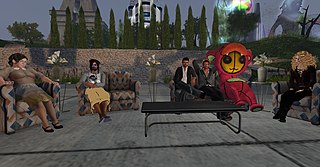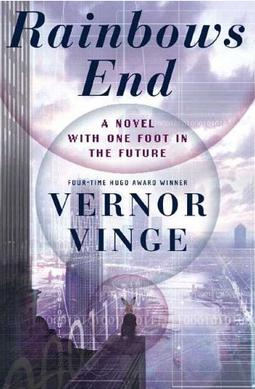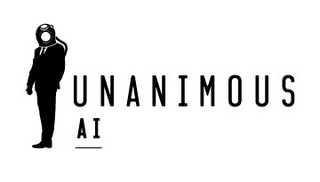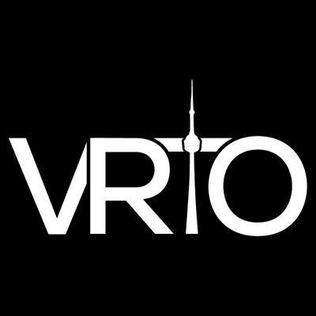
Virtual reality (VR) is a simulated experience that employs pose tracking and 3D near-eye displays to give the user an immersive feel of a virtual world. Applications of virtual reality include entertainment, education and business. Other distinct types of VR-style technology include augmented reality and mixed reality, sometimes referred to as extended reality or XR, although definitions are currently changing due to the nascence of the industry.

Augmented reality (AR) is an interactive experience that combines the real world and computer-generated content. The content can span multiple sensory modalities, including visual, auditory, haptic, somatosensory and olfactory. AR can be defined as a system that incorporates three basic features: a combination of real and virtual worlds, real-time interaction, and accurate 3D registration of virtual and real objects. The overlaid sensory information can be constructive, or destructive. This experience is seamlessly interwoven with the physical world such that it is perceived as an immersive aspect of the real environment. In this way, augmented reality alters one's ongoing perception of a real-world environment, whereas virtual reality completely replaces the user's real-world environment with a simulated one.
Haptic technology is technology that can create an experience of touch by applying forces, vibrations, or motions to the user. These technologies can be used to create virtual objects in a computer simulation, to control virtual objects, and to enhance remote control of machines and devices (telerobotics). Haptic devices may incorporate tactile sensors that measure forces exerted by the user on the interface. The word haptic, from the Greek: ἁπτικός (haptikos), means "tactile, pertaining to the sense of touch". Simple haptic devices are common in the form of game controllers, joysticks, and steering wheels.
Swarm intelligence (SI) is the collective behavior of decentralized, self-organized systems, natural or artificial. The concept is employed in work on artificial intelligence. The expression was introduced by Gerardo Beni and Jing Wang in 1989, in the context of cellular robotic systems.

Dario Floreano is a Swiss-Italian roboticist and engineer. He is Director of the Laboratory of Intelligent System (LIS) at the École Polytechnique Fédérale de Lausanne in Switzerland and was the founding director of the Swiss National Centre of Competence in Research (NCCR) Robotics.

The metaverse is a loosely defined term referring to virtual worlds in which users represented by avatars interact, usually in 3D and usually focused on social and economic connection.

Rainbows End is a 2006 science fiction novel by Vernor Vinge. It was awarded the 2007 Hugo Award for Best Novel. The book is set in San Diego, California, in 2025, in a variation of the fictional world Vinge explored in his 2002 Hugo-winning novella "Fast Times at Fairmont High" and 2004's "Synthetic Serendipity". Vinge has tentative plans for a sequel, picking up some of the loose threads left at the end of the novel. The many technological advances depicted in the novel suggest that the world is undergoing ever-increasing change, following the technological singularity, a recurring subject in Vinge's fiction and nonfiction writing.

Immersion Corporation is an Aventura, Florida based developer and licensor of touch feedback technology, also known as haptic technology. Immersion Corporation has been accused of being a patent troll. Founded in 1993 by Louis Rosenberg, it is currently headed by lawyer Francis Jose, who serves as both chief executive officer and general counsel.

Intelligence amplification (IA) refers to the effective use of information technology in augmenting human intelligence. The idea was first proposed in the 1950s and 1960s by cybernetics and early computer pioneers.
A virtual fixture is an overlay of augmented sensory information upon a user's perception of a real environment in order to improve human performance in both direct and remotely manipulated tasks. Developed in the early 1990s by Louis Rosenberg at the U.S. Air Force Research Laboratory (AFRL), Virtual Fixtures was a pioneering platform in virtual reality and augmented reality technologies.

Immersion into virtual reality (VR) is a perception of being physically present in a non-physical world. The perception is created by surrounding the user of the VR system in images, sound or other stimuli that provide an engrossing total environment.
A projection augmented model is an element sometimes employed in virtual reality systems. It consists of a physical three-dimensional model onto which a computer image is projected to create a realistic looking object. Importantly, the physical model is the same geometric shape as the object that the PA model depicts.
Virtual intelligence (VI) is the term given to artificial intelligence that exists within a virtual world. Many virtual worlds have options for persistent avatars that provide information, training, role-playing, and social interactions.
Affective haptics is the emerging area of research which focuses on the study and design of devices and systems that can elicit, enhance, or influence the emotional state of a human by means of sense of touch. The research field is originated with the Dzmitry Tsetserukou and Alena Neviarouskaya papers on affective haptics and real-time communication system with rich emotional and haptic channels. Driven by the motivation to enhance social interactivity and emotionally immersive experience of users of real-time messaging, virtual, augmented realities, the idea of reinforcing (intensifying) own feelings and reproducing (simulating) the emotions felt by the partner was proposed. Four basic haptic (tactile) channels governing our emotions can be distinguished:
- physiological changes
- physical stimulation
- social touch
- emotional haptic design.
Visuo-haptic mixed reality (VHMR) is a branch of mixed reality that has the ability of merging visual and tactile perceptions of both virtual and real objects with a collocated approach. The first known system to overlay augmented haptic perceptions on direct views of the real world is the Virtual Fixtures system developed in 1992 at the US Air Force Research Laboratories. Like any emerging technology, the development of the VHMR systems is accompanied by challenges that, in this case, deal with the efforts to enhance the multi-modal human perception with the user-computer interface and interaction devices at the moment available. Visuo-haptic mixed reality (VHMR) consists of adding to a real scene the ability to see and touch virtual objects. It requires the use of see-through display technology for visually mixing real and virtual objects and haptic devices necessary to provide haptic stimuli to the user while interacting with the virtual objects. A VHMR setup allows the user to perceive visual and kinesthetic stimuli in a co-located manner, i.e., the user can see and touch virtual objects at the same spatial location. This setup overcomes the limits of the traditional one, i.e, display and haptic device, because the visuo-haptic co-location of the user's hand and a virtual tool improve the sensory integration of multimodal cues and makes the interaction more natural. But it also comes with technological challenges in order to improve the naturalness of the perceptual experience.
uSens, Inc. is a Silicon Valley startup founded in 2014 in San Jose, California. The company's core team includes researchers and developers who build interactive and immersive computer-vision tracking solutions. The uSens team has extensive experience in artificial intelligence (AI), computer vision, 3D Human–computer interaction (HCI) technology and augmented reality and virtual reality. uSens has been applying computer vision and AI technologies in AR/VR, Automotive and smartphones.

Unanimous AI is an American technology company provides artificial swarm intelligence (ASI) technology. Unanimous AI provides a "human swarming" platform "swarm.ai" that allows distributed groups of users to collectively predict answers to questions. This process has resulted in successful predictions of major events such as the Kentucky Derby, the Oscars, the Stanley Cup, Presidential Elections, and the World Series.

Started in 2015 by Keram Malicki-Sanchez as a virtual reality Meetup Group in Toronto, VRTO launched the VRTO Virtual & Augmented Reality World Conference & Expo in June 2016 – an international exhibition and professional conference exploring arts, culture and science through immersive technologies. Its inaugural year – held at the Mattamy Centre – featured keynotes from University of Toronto Professor Steve Mann, Hollywood film director Brett Leonard – director of The Lawnmower Man, Chief Digital Officer Ana Serrano of the Canadian Film Centre and Phil Lelyveld of USC.

Domenico Prattichizzo is an Italian scientist with a strong and international recognized expertise in the fields of Haptics, Robotics and, Wearable technology. His researches find their main applications in virtual and augmented reality scenarios and in the rehabilitation of people with upper and lower limbs, visual and cognitive impairments.
Meta AI is an artificial intelligence laboratory owned by Meta Platforms Inc. Meta AI develops various forms of artificial intelligence, developing augmented and artificial reality technologies. Meta AI is an academic research laboratory focused on generating knowledge for the AI community. This is in contrast to Facebook's Applied Machine Learning (AML) team, which focuses on practical applications of its products.













